For those who missed the news, the West Coast premiere of Satchmo at the Waldorf, my first play, takes place on Tuesday at the Wallis Annenberg Center for the Performing Arts in Beverly Hills. (Tuesday’s performance is a preview—Wednesday is the official opening night.)
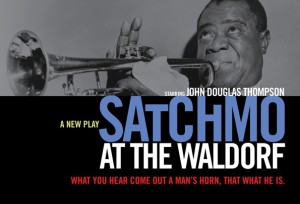 LA Weekly included Satchmo in its latest list of “19 Best Things to Do in L.A. This Week”:
LA Weekly included Satchmo in its latest list of “19 Best Things to Do in L.A. This Week”:
Actor John Douglas Thompson stars in Satchmo at the Waldorf, a multiple-character solo performance from Long Wharf Theatre and Shakespeare & Company about the legendary Louis Armstrong. Along with playing the trumpet and cornet, Armstrong crooned standards such as “Hello, Dolly!” and “What a Wonderful World,” making him one of America’s most beloved jazz greats. Nicknamed Satchmo (a possible derivative of “satchel mouth”), Armstrong was a character with many stories, as heard in writer Terry Teachout’s play. Directed by Gordon Edelstein, the show focuses on Armstrong’s reflections following one of his final performances in 1971 at the Waldorf Astoria Hotel.
I’ll be doing a post-show talkback at the Wallis on Tuesday night. Performances run through June 7. To order tickets or for more information, go here.
* * *
The trailer for the Wallis’ production of Satchmo at the Waldorf:
The Wall Street Journal interviewed me about Satchmo at the Waldorf in 2012. To watch the video, which also includes footage from the show, go here.



 Robert Askins’ “Hand to God” set the bar very high for “Permission,” in which he returns for the second time in a row to the mysterious world of fundamentalist-flavored evangelical Christianity as practiced in suburban Texas. Mysterious, that is, to Manhattanites: Most residents of flyover country (as it’s known on the godless coasts) don’t find it strange at all. But here as in “Hand to God,” Mr. Askins has found a decidedly peculiar corner of the culture that spawned him and put it on stage for the rest of us to puzzle out.
Robert Askins’ “Hand to God” set the bar very high for “Permission,” in which he returns for the second time in a row to the mysterious world of fundamentalist-flavored evangelical Christianity as practiced in suburban Texas. Mysterious, that is, to Manhattanites: Most residents of flyover country (as it’s known on the godless coasts) don’t find it strange at all. But here as in “Hand to God,” Mr. Askins has found a decidedly peculiar corner of the culture that spawned him and put it on stage for the rest of us to puzzle out.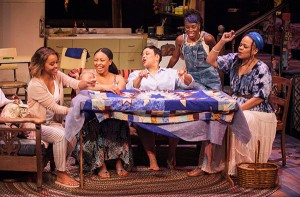 Katori Hall’s “The Mountaintop,” which made it to Broadway in 2011, did nothing for me, but colleagues familiar with her previous work assured me that it didn’t do her justice. Then I saw “Our Lady of Kibeho” and found it impressive—the best new play of 2014, in fact. So I decided to check out Arena Stage’s premiere production of “The Blood Quilt” to see which way the coin would fall, and the verdict is positive. By turns raucously funny and electrically intense, “The Blood Quilt” is a tale of black family life that places Ms. Hall alongside Amy Herzog as the most promising young American playwright of the past decade.
Katori Hall’s “The Mountaintop,” which made it to Broadway in 2011, did nothing for me, but colleagues familiar with her previous work assured me that it didn’t do her justice. Then I saw “Our Lady of Kibeho” and found it impressive—the best new play of 2014, in fact. So I decided to check out Arena Stage’s premiere production of “The Blood Quilt” to see which way the coin would fall, and the verdict is positive. By turns raucously funny and electrically intense, “The Blood Quilt” is a tale of black family life that places Ms. Hall alongside Amy Herzog as the most promising young American playwright of the past decade.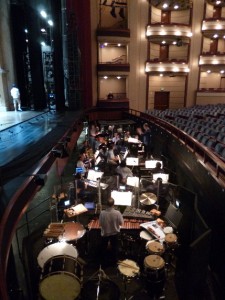 If, on the other hand, you’re older than 50, you won’t be surprised in the least by what I’ve just described. That’s the way pretty much all Broadway musicals used to begin—with an extended orchestral prelude called an “overture.” Most musical-comedy overtures consist of a string of instrumental excerpts from the songs of a show, played in a continuous sequence with the curtain down and orchestrated in a cymbal-crashing style designed to whip the audience into a frenzy of expectancy. And that they do, on occasion spectacularly so, as in the raucous overture to “Gypsy,” whose climax is a shrieking take-it-all-off trumpet solo that never fails to bring down the house….
If, on the other hand, you’re older than 50, you won’t be surprised in the least by what I’ve just described. That’s the way pretty much all Broadway musicals used to begin—with an extended orchestral prelude called an “overture.” Most musical-comedy overtures consist of a string of instrumental excerpts from the songs of a show, played in a continuous sequence with the curtain down and orchestrated in a cymbal-crashing style designed to whip the audience into a frenzy of expectancy. And that they do, on occasion spectacularly so, as in the raucous overture to “Gypsy,” whose climax is a shrieking take-it-all-off trumpet solo that never fails to bring down the house….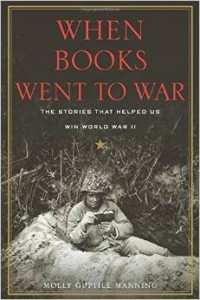
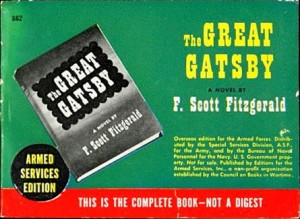 The story of the ASEs is told efficiently enough in When Books Went to War. But Manning is a lawyer, not a literary scholar, and she appears to have little or no awareness of their cultural context, thus making it impossible for her to interpret the project’s larger significance other than superficially. It is revealing, for instance, that the word “middlebrow” appears nowhere in When Books Went to War. Yet the most casual perusal of the list of books reprinted by the Council on Books in Wartime reveals that it reflected in every way the democratic assumptions of the middlebrow culture that dominated America throughout much of the 20th century. The vast popularity of the ASEs testifies to the strength of those assumptions.
The story of the ASEs is told efficiently enough in When Books Went to War. But Manning is a lawyer, not a literary scholar, and she appears to have little or no awareness of their cultural context, thus making it impossible for her to interpret the project’s larger significance other than superficially. It is revealing, for instance, that the word “middlebrow” appears nowhere in When Books Went to War. Yet the most casual perusal of the list of books reprinted by the Council on Books in Wartime reveals that it reflected in every way the democratic assumptions of the middlebrow culture that dominated America throughout much of the 20th century. The vast popularity of the ASEs testifies to the strength of those assumptions.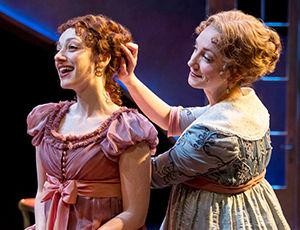 CLOSING SOON IN CHICAGO:
CLOSING SOON IN CHICAGO: